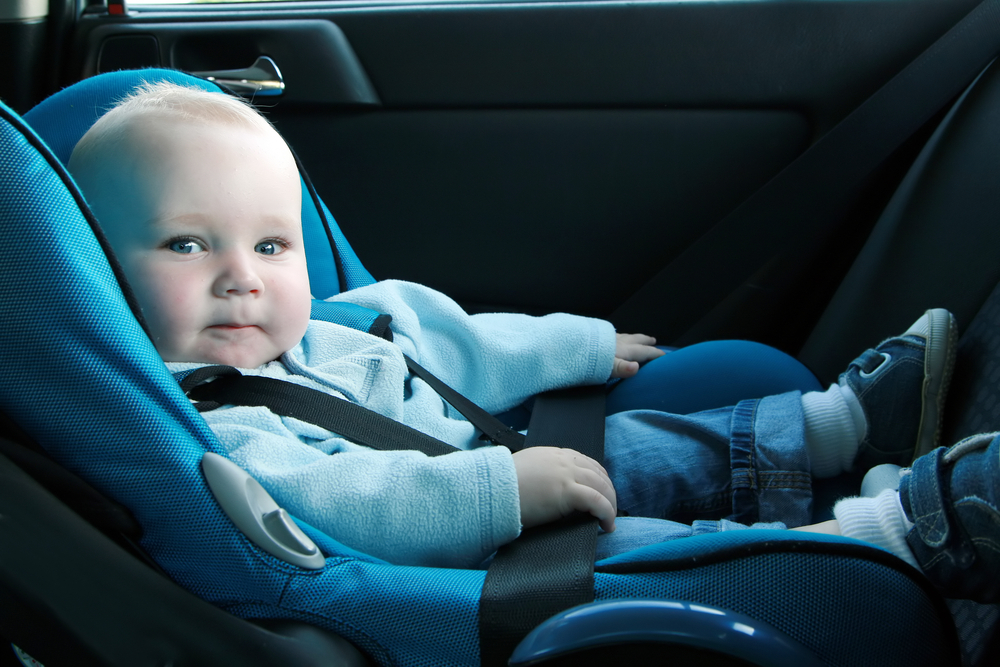Child Car Seat Rules Mostly Ignored, Study Finds

Most U.S. kids do not sit safely in cars, either because they are not properly restrained in car seats or booster seats, or because they sit in the front seat, according to a new study.
Researchers observed nearly 22,000 children and found that just 3 percent of children between ages 1 and 3 who were restrained at all were sitting in a proper, rear-facing car seat, and only 10 percent of 8- to 10-year-old children were properly restrained in a booster seat or a car seat.
The difficulty people have in adhering to car safety regulations may show how dramatically they've changed in recent years, said the study's author, Dr. Michelle Macy, of the C.S. Mott Children's Hospital at the University of Michigan, Ann Arbor. "For parents, it's not anything they would have done as kids," she said.
In the U.S., car crashes are the leading cause of death for children over age 3, however, and more than 140,000 children go to emergency rooms each year as a result of accidents. Properly seating a child in a car seat or booster seat, and in the back seat, reduces the risk of injury or death, but many parents don't follow the guidelines, the researchers said.
The researchers looked at data from previous studies that tracked children's seating in cars at public sites such as restaurants, child care centers and gas stations between 2007 and 2009, and based their observations on American Academy of Pediatrics guidelines for child passenger safety in 2011.
"The recommendations are confusing and have gone through a lot of changes," Macy said. Laws vary from state to state, and state laws aren't as strict as the recommendations from the AAP.
The newest AAP recommendations say that until age 2, children should sit in rear-facing seats, and children over age 2 should sit in front-facing seats with harnesses until their weight and height exceeds the car seat's capacity. Then, a booster seat should be used until a child is 57 inches tall, which is the height of an average 11-year-old. Kids shouldn't sit in the front seat until they're 13 years old, the AAP says.
Sign up for the Live Science daily newsletter now
Get the world’s most fascinating discoveries delivered straight to your inbox.
The researchers found that compliance rates were low even under the older, less-restrictive recommendations.
Particularly common mistakes included that children over age 7 were seldom seated in a booster seat (only 2 percent of kids used a booster seat), and that by ages 8 to 10, a quarter of kids were already sitting in the front seat.
"It's more the children's size than their age," that's important to determining the proper car or booster seat, Macy said, and suggested that parents buy car seats with the highest maximum weights, so they last longer.
Additionally, the researchers found a wide gap in car seat and seat belt use between white children and children of black or Hispanic descent. Among kids ages 3 and under, black or Hispanic children were 10 times more likely to be unrestrained than their white counterparts.
The racial discrepancy between proper seat belt and car seat use has long been a barrier pediatricians have looked to fix, according to Susan Laurence, an injury prevention specialist who heads the car seat program at Cincinnati Children's Hospital. Events that educate parents of all ethnic communities about the benefits of car seat use can make a difference, she said.
"It's an awareness issue," Laurence said. "I don’t think that parents want to do something to harm their kids."
The study was published today (Aug. 7) in the American Journal of Preventative Medicine.
Pass it on: To avoid death or injury, kids should follow national guidelines for car seats and seat belt use.
Follow MyHealthNewsDaily on Twitter @MyHealth_MHND. Find us on Facebook and Google+.









